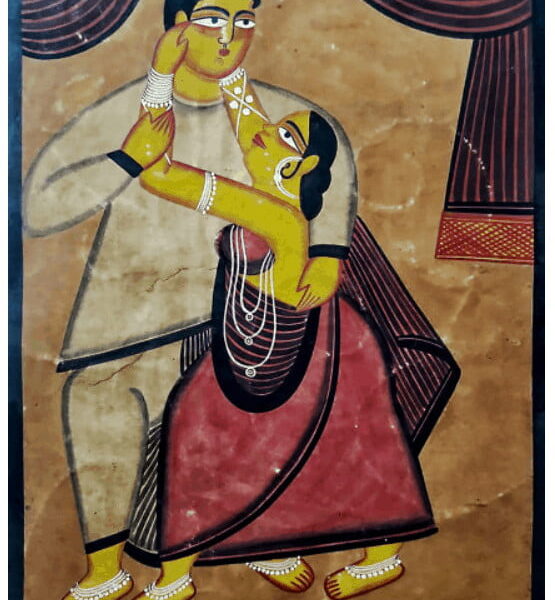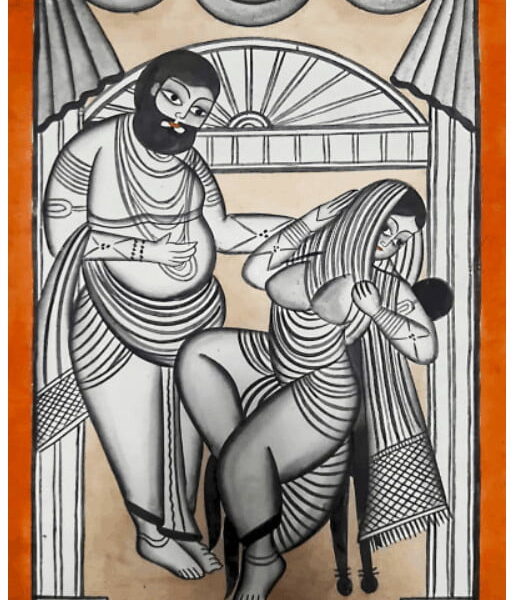Showing 3–4 of 27 results
Babu Bibi
A couple gets intimate and romantic while spending time together. As a part of a story telling about the regular, day to day life, this piece of art makes for a sweet romantic tale. Such paintings, accompanied by songs, in olden days of no television serials, would serve the purpose of entertainment to the village women. They would listen to the stories sung by the Pata Shilpis and laugh and cry, and become one with the characters. This one is done by a young artist Rajesh Chitrakar.
Babu Bibi
A narrative of a regular couple’s life where the Bibi (wife) is sulking and the Babu (man) is trying to get her back in good mood by pampering her. Such stories, back in time of no television, would serve as the source of entertainment to village women. This one is done by Bahadur Chitrakar, who in his youth, would sing along and the audience would sit together in one of the courtyards of the village to listen and enjoy.


